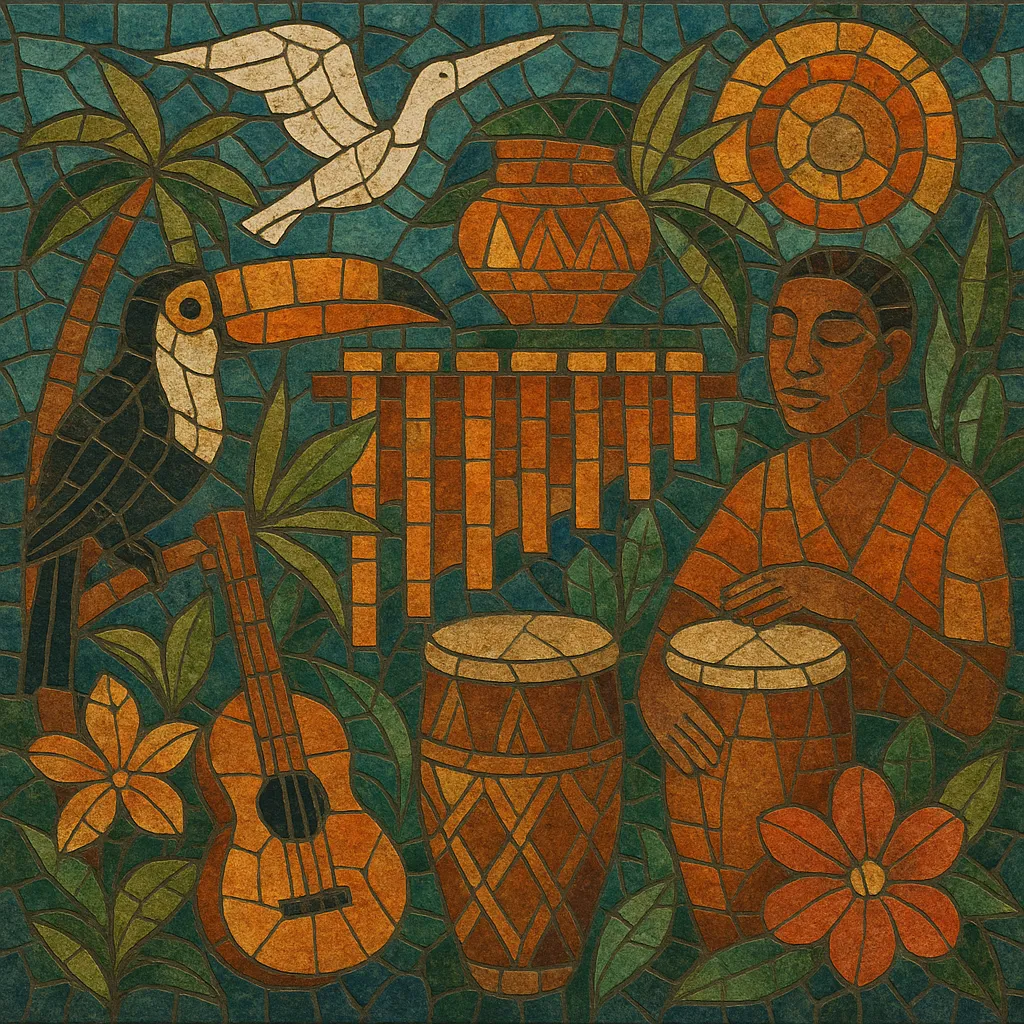Exotica is a mid‑century style of mood music that blends jazz harmony, easy‑listening orchestration, and a collage of global percussion and timbral signifiers meant to evoke imaginary tropical, Polynesian, Asian, African, and Latin locales.
Characterized by vibraphone and marimba leads, lush strings, woodwinds, wordless vocals, bird calls, gongs, and abundant reverberation, it creates a cinematic “armchair travel” experience. Rather than documenting specific traditions, exotica assembles stylized sound cues—Afro‑Cuban grooves, Polynesian drum patterns, pentatonic and whole‑tone colors—into atmospheric mini‑dramas.
The genre flourished alongside postwar tiki culture and hi‑fi/stereo demonstrations, prioritizing vivid spatial staging and evocative orchestration over virtuoso soloing.
Post–World War II America embraced tiki bars, Polynesian restaurants, and “armchair tourism,” creating demand for music that could sonically transport listeners. Composer-arranger Les Baxter’s albums—especially "Ritual of the Savage" (1951)—established the exotica template: orchestral jazz harmonies, exotic percussion, choral textures, and evocative titles conjuring far‑flung places.
Pianist-bandleader Martin Denny popularized the term with his 1957 album "Exotica," featuring vibraphone, marimba, bird calls, and Latin percussion. Arthur Lyman, a former member of Denny’s group, brought a shimmering, vibraphone‑forward sound that became a hallmark of the style. Parallel artists—including Esquivel, Korla Pandit, Yma Sumac, and Robert Drasnin—expanded the palette with stereo spectacle, space‑age arranging, and theatrical vocal timbres.
Exotica thrived during the hi‑fi boom, when living‑room listening prized vivid stereo imaging and dramatic orchestration. Albums borrowed Afro‑Cuban grooves (mambo, cha‑cha‑chá), Polynesian and “South Seas” motifs, pentatonic/whole‑tone colors, and sound effects (winds, wildlife) to create immersive, cinematic vignettes.
By the mid‑1960s, rock and soul eclipsed exotica on the charts. Collectors and cultural historians revived interest in the 1990s lounge renaissance, catalyzing tiki culture’s return and inspiring new artists (e.g., Don Tiki) and reissues of classic records. Contemporary producers and sample‑based scenes (Shibuya‑kei, vaporwave/mallsoft, certain downtempo and chillout strains) have recontextualized exotica’s textures.
Modern appraisals acknowledge exotica’s imaginative production and arranging while also critiquing its reliance on generalized, romanticized depictions of non‑Western cultures. Current practitioners often approach the style with greater specificity, collaboration, and credit to source traditions.


